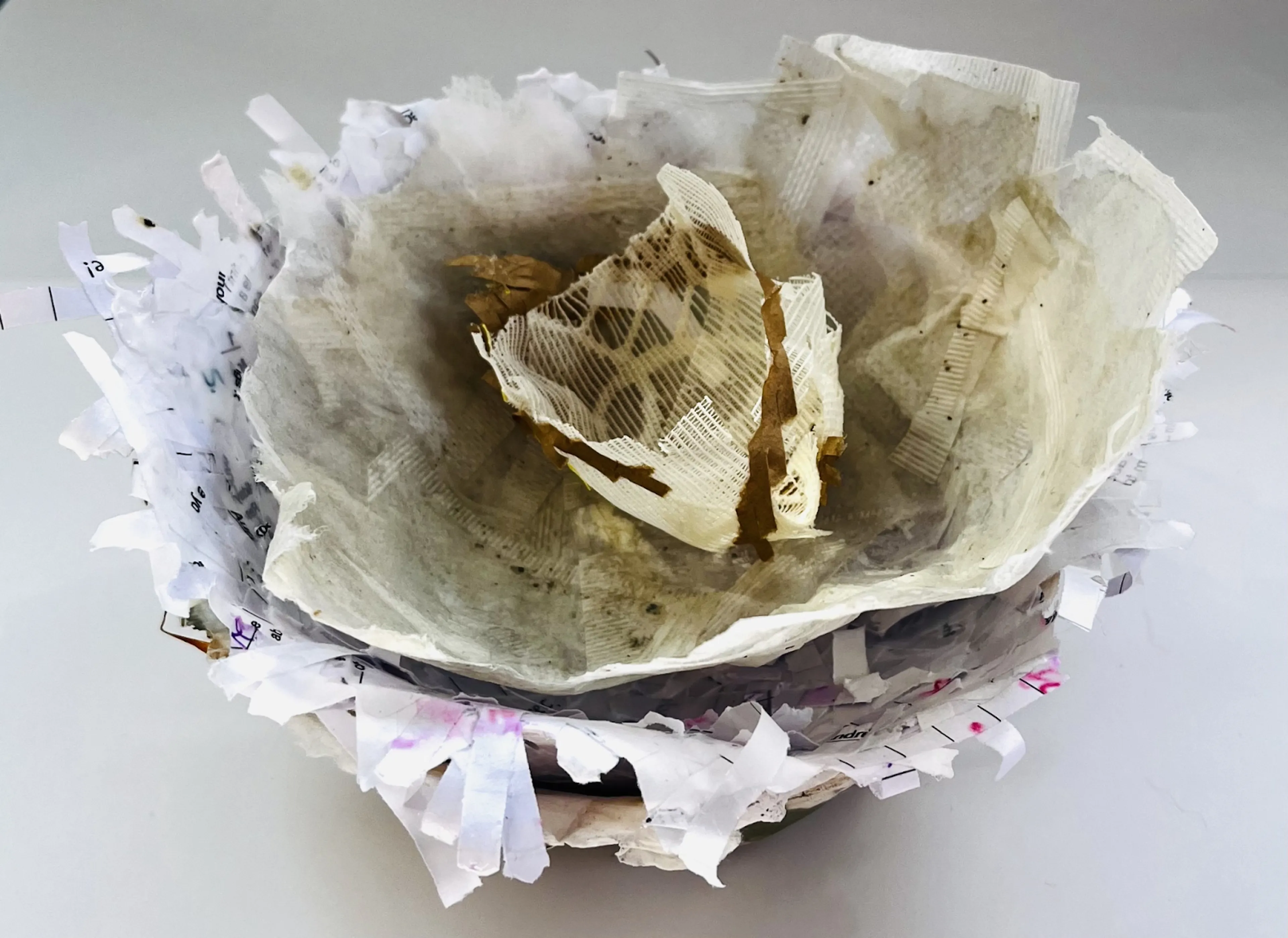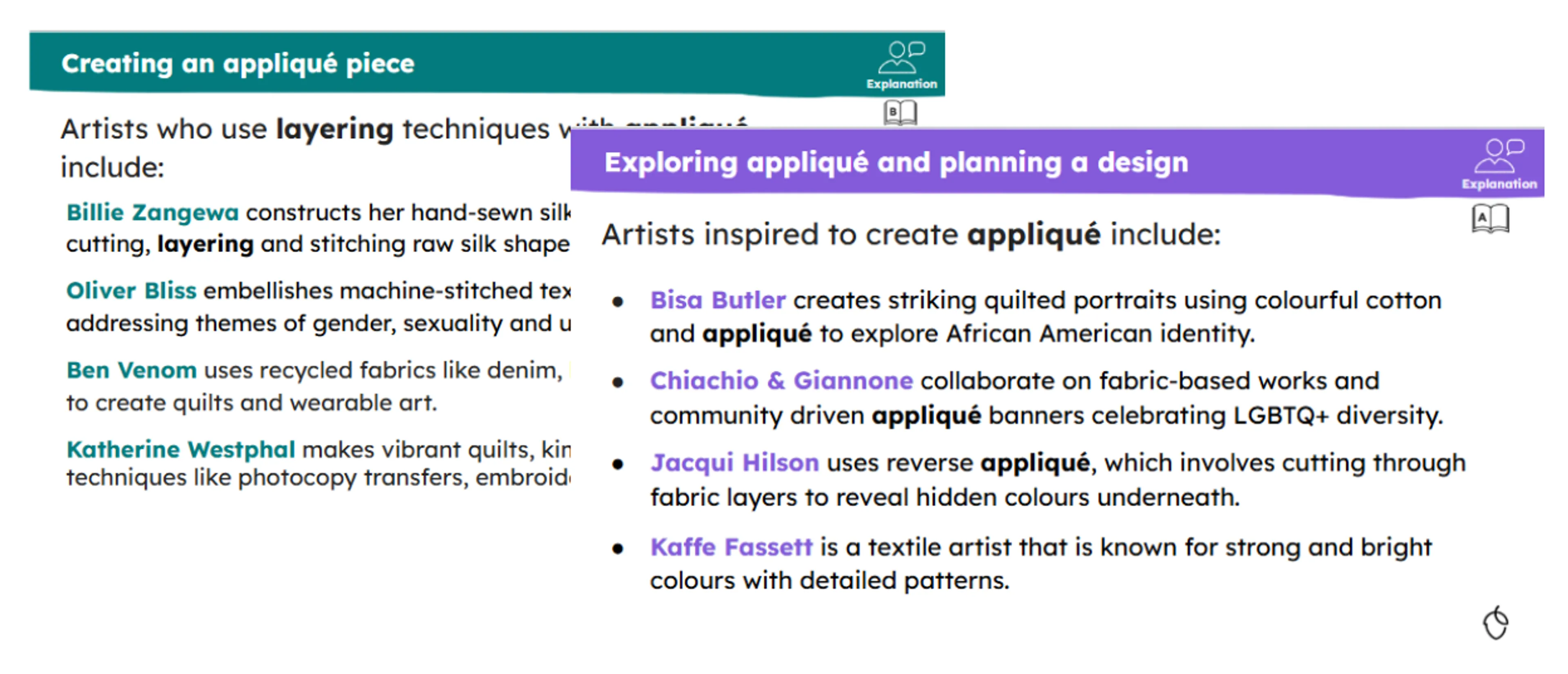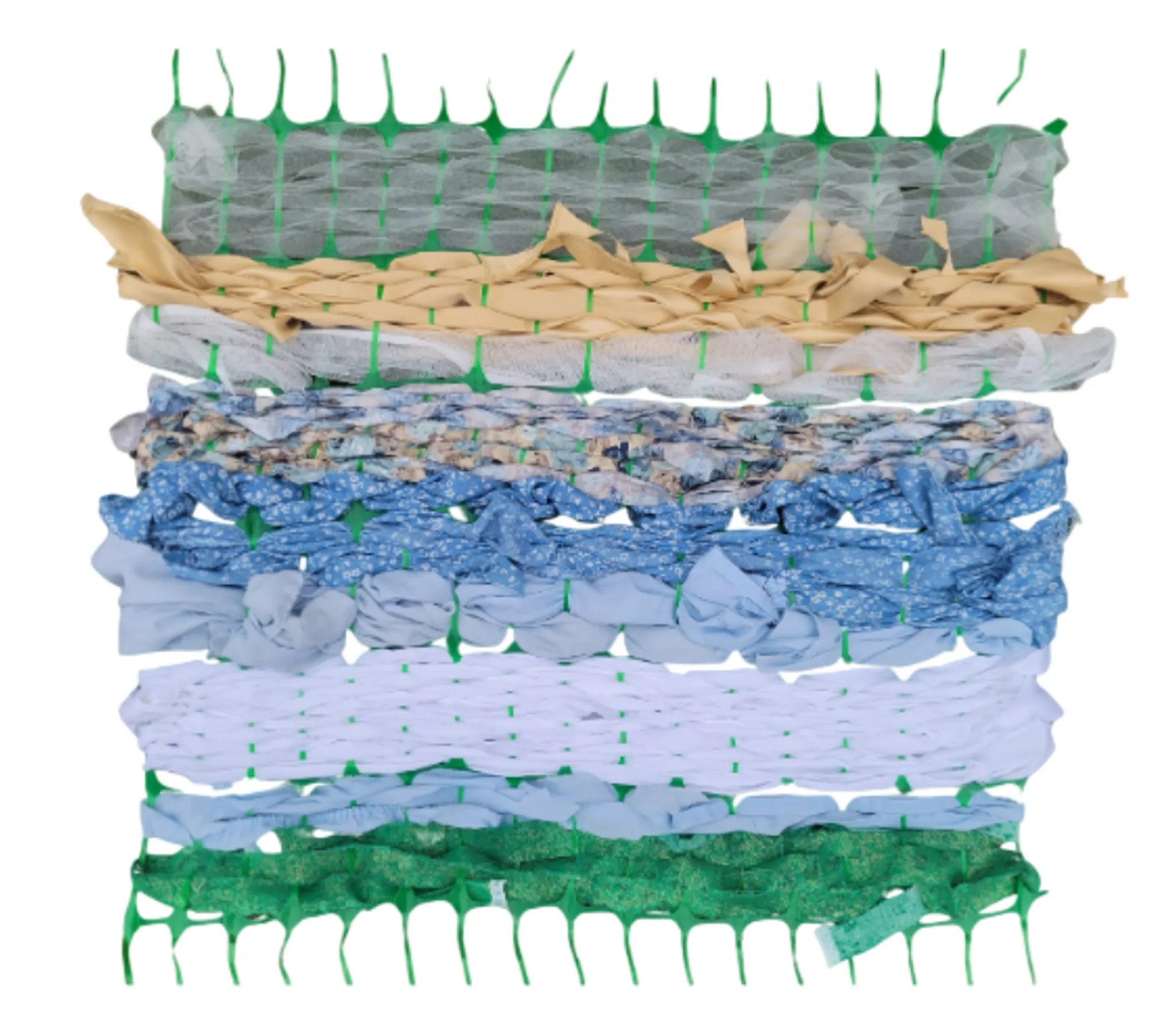
Categories
Lesson planning
24 September 2025Art and design at Oak: Our approach to imagery and references

Emily Gopaul
Art and design subject lead
Oak’s art and design curriculum offers diverse artist references from many places, times and styles, giving teachers flexibility to choose what suits their pupils. By sharing many references through text, Oak includes a broader range of artists while respecting copyright and image permissions. Lessons include biographies and contextual information, and slides feature inspiring artwork examples that save teachers time and spark inspiration.
If you’ve explored Oak’s art and design curriculum for key stage 1-2, key stage 3-4, developed in partnership with NSEAD, you may have noticed a distinctive approach. Our units and lessons feature inspiring artist and maker references from a wide range of cultures, periods, and styles. The artist names appear in text format cross key stages. We have curated a diverse bank of high-quality art references so you can easily choose the art that you want to share in your classroom. This saves you the time and effort of ‘finding’ all your artists references, and keeps the art you share inspiring and inclusive.

An image of 3D form from the year 8 lesson Exploring biomorphic sculptures using papier mâché, from the unit Being curious about 3D design.
A flexible approach built with teachers in mind
We created our curriculum with teacher autonomy in mind because we know that art and design teachers often curate the images and examples that best suit their pupils, school context, and teaching style. With this in mind, our lessons include a wealth of references to artists, craftspeople, and designers from a variety of disciplines, styles, and backgrounds. You’ll find both well-known and lesser-known figures referenced across our curriculum, working in everything from traditional painting and sculpture to contemporary craft, digital design, and beyond. Examples can be seen in these slides from the year 10 lesson Surface quality and appliqué from the unit Textile Design.

Our curriculum aims to support you by providing artist references that can be adapted, explored further, or supplemented with imagery that suits your teaching. Whether you choose to focus on all the work referenced in our curriculum or a local artist relevant to your community, the decision is yours.
Broad and rich art references for you and your pupils
When we first started thinking about our curriculum, we intended to include a broad range of images of artworks throughout. Like many of you, our team of artist-teachers knows how impactful it is to show artworks in the classroom and how this often falls under the “fair dealing” exception for instructional use of images.
However, Oak is not classed as a school, so we can’t rely on that exception. Instead, we need full permissions for every single image we use. In practice, we found that it was far easier to license artworks from the Western canon or by famous artists, usually because they’re out of copyright, and much harder and even impossible to license imagery from contemporary or lesser-known artists.
Rather than limiting our references to what was straightforward to license, we decided to take a different approach. By referencing artworks through text instead of images, we’re free to highlight a much broader and richer range of art without compromising on breadth, quality, or relevance.

Mixed media collage in the year 7 Body adornment lesson, from the unit An overview of craft.
Supporting you to make choices for your pupils
We know that almost any teaching point can be explored through a variety of artworks. Whether you’re introducing the theme of “art inspired by nature” through Georgia O’Keeffe or Henri Rousseau, or through Kate Atkin, Hurvin Anderson, or Ebony G Patterson, our aim is to give you the starting points to build your own lessons. Our lessons come with additional materials and artist biographies, to further contextualise the artists referenced and help you make your selections.

Weaving example from the Primary lesson Exploring weaving techniques, from the unit Watery weavings: introducing textiles
Please don’t worry that your pupils will be short of visual inspiration. Our slides are also filled with practical examples and artwork made by our talented team of illustrators and artist-educators, designed to inspire outcomes, teach skills and spark creativity.
Free with no subscription required, fully editable and ready-to-use
All lesson resources come with downloadable, editable slide decks making it quick and easy for you to deliver high quality art teaching tailored to your classroom.
Our resources provide a fully sequenced curriculum which, because art is not strictly linear in nature, allows you to either follow the complete sequence or cherry-pick individual lessons and units to suit your context.

